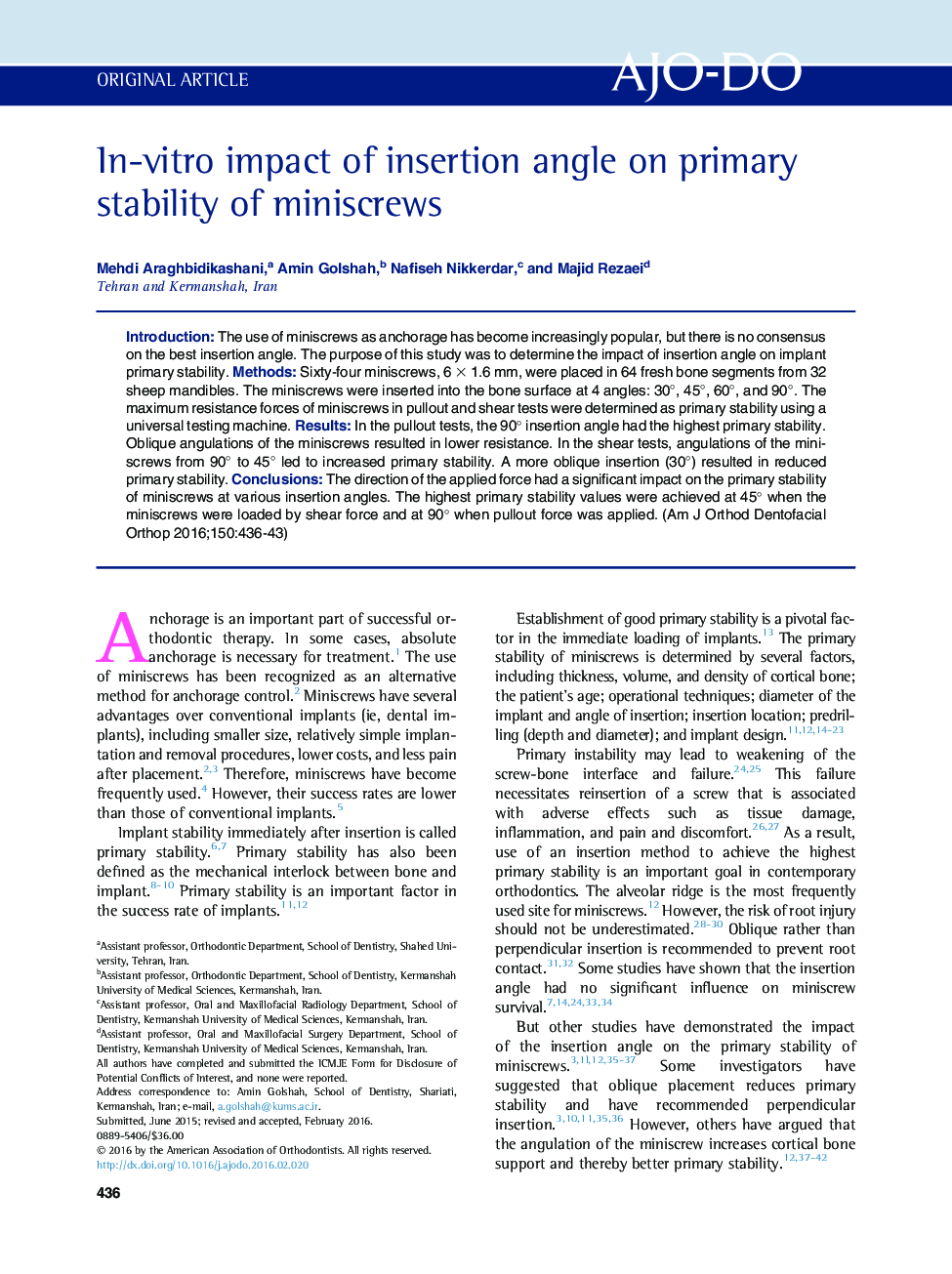| Article ID | Journal | Published Year | Pages | File Type |
|---|---|---|---|---|
| 3115224 | American Journal of Orthodontics and Dentofacial Orthopedics | 2016 | 8 Pages |
•Screw angulation was in occlusogingival direction (orthogonal to shear force).•The impact of insertion angle on miniscrew primary stability depends on axial load direction.•In the pullout test, insertion at 90° into the buccal surface has the greatest primary stability.•In the shear test, a 45° insertion angle has the greatest primary stability.
IntroductionThe use of miniscrews as anchorage has become increasingly popular, but there is no consensus on the best insertion angle. The purpose of this study was to determine the impact of insertion angle on implant primary stability.MethodsSixty-four miniscrews, 6 × 1.6 mm, were placed in 64 fresh bone segments from 32 sheep mandibles. The miniscrews were inserted into the bone surface at 4 angles: 30°, 45°, 60°, and 90°. The maximum resistance forces of miniscrews in pullout and shear tests were determined as primary stability using a universal testing machine.ResultsIn the pullout tests, the 90° insertion angle had the highest primary stability. Oblique angulations of the miniscrews resulted in lower resistance. In the shear tests, angulations of the miniscrews from 90° to 45° led to increased primary stability. A more oblique insertion (30°) resulted in reduced primary stability.ConclusionsThe direction of the applied force had a significant impact on the primary stability of miniscrews at various insertion angles. The highest primary stability values were achieved at 45° when the miniscrews were loaded by shear force and at 90° when pullout force was applied.
